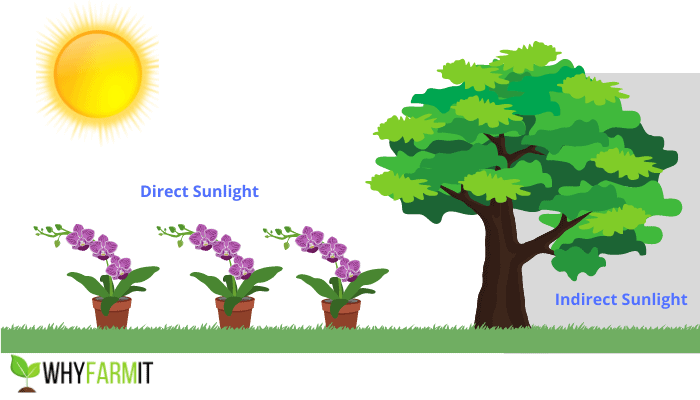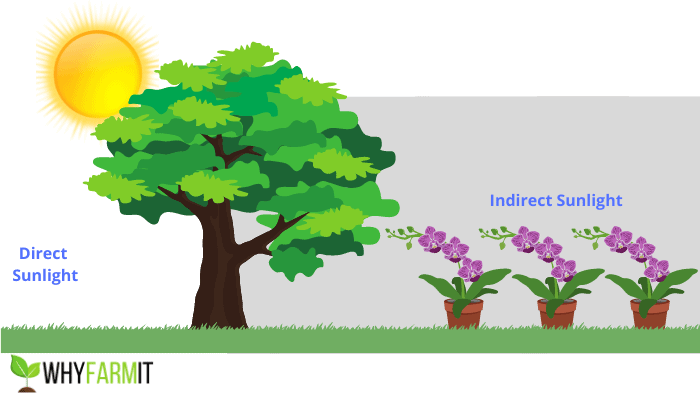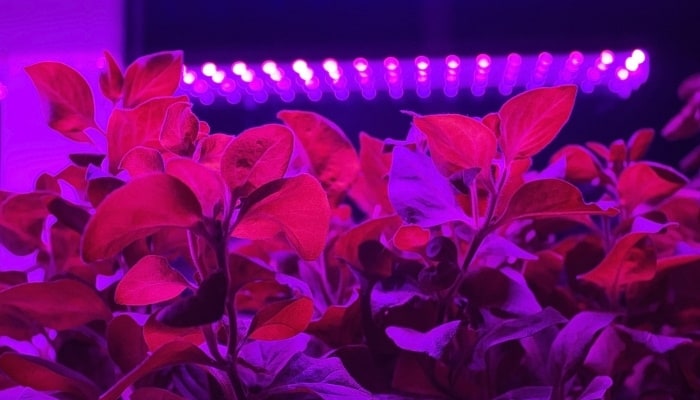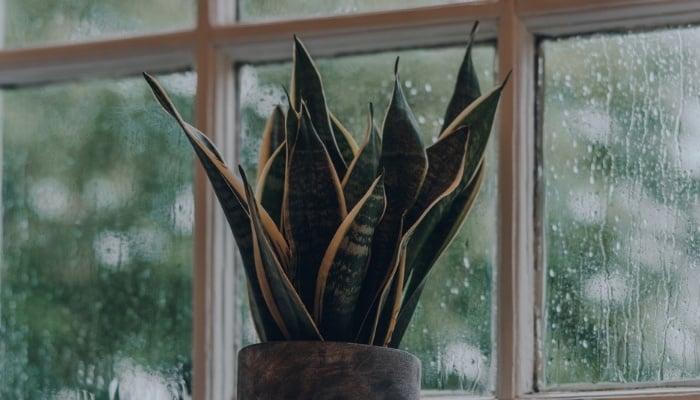In today’s market, there is a plethora of captivating and delightful plants to choose from. It can be quite tempting to adorn your home with many houseplants, both for their air-cleansing benefits and their visual appeal.
However, light can be a troublesome issue for indoor plants as well as outdoor specimens, and if your plants don’t receive adequate sunlight, you’ll quickly run into issues.
Can a plant grow without sunlight? A plant requires sunlight to photosynthesize, a process that creates energy for it to survive. A plant can not grow without sunlight because it can not photosynthesize. If your plant is showing signs of stress, the amount of sunlight it receives may be the issue.
If your plants aren’t thriving, determine how much light they are receiving, and try to increase or decrease the amount of sunlight based on the variety you are growing. Don’t worry, we’ll talk you through it below.
Importance of Sunlight To Plants
The importance of sunlight to plants is unparalleled when it comes to the needs of a living organism. Sunlight allows a plant to photosynthesize, the process which creates energy for a plant.
Sunlight covers a broad array of light colors. While some light wavelengths are used for photosynthesis, other wavelengths signal to a plant when it should break dormancy or flower, depending on the season.
Role of Sunlight in Photosynthesis
The role of sunlight is extremely significant in photosynthesis. Photosynthesis is a chemical reaction that begins in the chloroplasts of the leaves of a plant. The chloroplasts absorb solar energy, or sunlight, as it hits the leaf’s surface.
The energy is then a catalyst that allows a chemical reaction to occur between water, glucose, and carbon dioxide. This is then the energy, or food, plants use to grow and reproduce.
Direct Sunlight vs. Indirect Sunlight
While all plants require sunlight to survive, there are two types of natural sunlight: direct and indirect.
Direct sunlight is sunlight that is able to reach the leaf’s surface with no interference. Many varieties of plants, like vegetables and trees, require direct sunlight to grow.

Indirect sunlight is sunlight with less intensity, most likely reduced by an obstruction or other dispersal of sunlight rays. Plants that prefer indirect sunlight are usually houseplants and plants that live in nature in the understory of other plants.

Do Plants Need Sunlight or Just Light?
Plants require sunlight because it covers many spectrums of light. Regular light bulbs usually only produce light rays in the spectrums humans can see.
While these seem to produce light that can grow plants, without UV rays and other colors of the spectrum, the chemical process of photosynthesis will not occur.
Sunlight may be reproduced using special light bulbs (see below for ideal options) that cover the full light spectrum.
How Much Sunlight Do Plants Need?
The amount of sunlight a plant needs depends on the variety. For vegetables and other outdoor varieties, a minimum of 7- 8 hours of sunlight is necessary. While plants may grow with less, they usually do not exhibit the same characteristics as a plant grown in the required sunlight.
Certain plants that do not require more sunlight to produce energy will grow with as little as 4-6 hours of sunlight a day.
If you do not have direct sunlight and need an option for darker space here is ‘20 Best Low Light Indoor Trees + Care & Tips‘ that will help you choose.
What Happens To Plants Without Sunlight?
Since plants rely on sunlight to produce energy for survival, without sunlight a plant’s health will begin to decline, and it may die.
When a plant’s sunlight exposure is eliminated, it will show signs of stress. These may include symptoms of yellowing, browning, wilting, and dieback of leaves. A plant can survive off reserve energy that it has stored in its roots but only for a short period of time.
How Long Can Plants Survive Without Sunlight?
Plants can only survive a limited amount of time without sunlight. As time passes, without sunlight a plant’s health will begin to decline exponentially.
A plant will usually begin to show signs of lack of sunlight after three or four days. The more time that the plant goes without sunlight, the more the plant’s health will decline. In most cases, a plant will not survive more than one or two weeks without sunlight.
Do Dormant Plants Need Sunlight?
While the main job of leaves is to collect sunlight for photosynthesis, you may question if plants need sunlight in dormancy when they do not have leaves. While a tree in dormancy may not be producing energy through photosynthesis, it does need sunlight.
Sunlight is still received by the plant in dormancy. Through its hormonal system, it will track the amount of sunlight hours it receives. In conjunction with temperature, sunlight will signal to a plant when it is time to break dormancy.
How To Create Sunlight Indoors for Plants
While sunlight is essential to a plant’s growth, we aren’t always able to receive sunlight indoors or during the fall and winter. In this case, lights for indoor growing can be utilized.
Full spectrum LEDs are most commonly used today when there is a need for supplemental light. Many small indoor grow-light kits are easy to use and meant for at-home use.

Sunlight vs. Artificial Light
While the sun is the most natural and all-encompassing light source for plants, artificial light produced by LEDs can closely imitate the sun.
Artificial lights meant for growing plants will cover the full light spectrum, but they may need to be adjusted to give the plant the correct wavelength during the correct season.
Best LED Grow Lights for Indoor Plants
LEDs are extremely small and efficient lights that can mimic the sun’s rays effectively. They come in different shapes & sizes and have different applicable uses. See below for a list of 5 great LED grow light options:
1. Adjustable 5-Arm LED Grow Lights
These lights have the ability to give multiple plants in the same area different intensities of sunlight. With five separate adjustable arms, each can be angled and adjusted to give each plant what it needs to grow best.
2. Full Spectrum Disc Grow Light
Encompassing the full spectrum of light, these are great at focusing growing light in one particular area. This compact light is a great choice for small indoor lighting needs.
3. Vivosun Low-Heat Grow Light
Great for larger growing needs, the intensity of this light will cover a larger footprint and should mimic the sun most similarly. With a dimmer knob, this light allows you to fine-tune the spectrum of light for different growing periods.
4. Under-Shelf Grow Light Strips
This is the most customizable option because it is able to be put almost anywhere. These lighting strips can be put under cabinets for growing herbs on your kitchen counter or bring light to a normally dark area.
5. LED Grow Light Bulbs
LED grow light bulbs are a great way to bring the power of the sun to any existing lamp. If you have house plants that need some supplemental light, an LED bulb can be put directly into an existing lamp.
If placed within a few feet of the plants, this should help to give them ample sunlight.
Related Questions:
Can Plants Grow Without Soil?
Soil is the most common growing medium for plants, but many different growing substrates exist, and hydroponics is growing more popular by the day.
To eliminate the need for balancing soil ecology, substrates like rock-wool, coco coir, and other fibrous materials can grow a plant the same as any soil.
In this case, the growing medium is usually void of nutrients. A fertilizer will need to be regularly applied to ensure the plants receive everything they need to survive.
Do Seeds Need Light To Germinate?
While seeds may not be able to absorb sunlight, they can feel the warmth it provides. Without sunlight, a seed may germinate if the ambient temperature is warm enough, but it will not survive for long thereafter.
A seed contains all of the needed “tools” to allow a seedling to begin its life. Its cotyledons are its first leaves that will begin to absorb the sunlight, producing energy for the plant to grow.
Without sunlight, a seed may germinate, but when the cotyledons find no sunlight, the seedling will die.
Conclusion
Sunlight is vital to a plant’s growth because it drives photosynthesis. Ensuring your plant receives ample sunlight and is able to photosynthesize effectively is important to its thriving!
Understanding what variety you are growing along with its natural habitat and climate can help you ensure your plant gets what it needs most to grow.
When you aren’t able to grow outdoors or need to supplement the light you already receive, LEDs are a great way to give your plants enough sunlight to grow!

